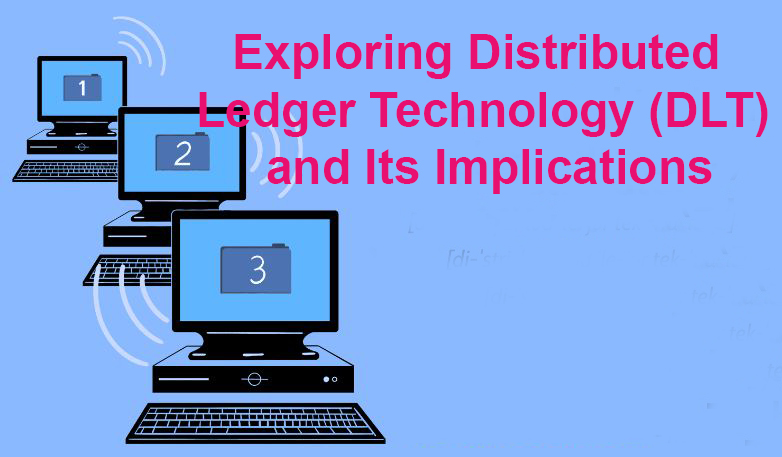Distributed Ledger Technology (DLT) | At the end of reading this article you would know the intricacies of DLT, its key features, potential applications, and the impact it has on various industries. Read more.
Exploring Distributed Ledger Technology (DLT) and Its Implications
Distributed Ledger Technology (DLT) represents a fundamental shift in how data is stored, shared, and managed across networks. At its core, DLT is a decentralized database that records transactions in a secure, transparent, and immutable manner.
Understanding Distributed Ledger Technology
DLT is a type of database that exists across multiple locations or among multiple participants, rather than being stored in a single centralized location.
Unlike traditional databases, which rely on a central authority to manage and validate transactions, DLT operates on a peer-to-peer network, where each participant (or node) maintains a copy of the ledger. This distributed nature eliminates the need for a central point of control, resulting in increased transparency, security, and resilience.
Key Features of DLT
Several key features distinguish DLT from traditional databases:
Decentralization:
DLT operates on a decentralized network of nodes, with no single point of control. This decentralization ensures that no single entity can manipulate the data or control the network, enhancing trust and transparency.
Immutable Record:
Once data is recorded on the ledger, it cannot be altered or tampered with. Each transaction is cryptographically linked to the previous one, creating a chain of immutable records that provide a transparent and auditable history of transactions.
Consensus Mechanisms:
DLT relies on consensus mechanisms to achieve agreement among network participants on the validity of transactions. Consensus mechanisms ensure that all nodes in the network reach a common understanding of the state of the ledger, even in the presence of malicious actors.
Security:
DLT employs cryptographic techniques to secure data and transactions on the network. Each participant has a unique cryptographic identity, and transactions are cryptographically signed to prevent unauthorized access or tampering
Transparency:
DLT provides transparency by allowing all participants to view and verify transactions on the ledger. This transparency fosters trust among network participants and reduces the risk of fraud or manipulation.
Applications of Distributed Ledger Technology
DLT has a wide range of applications across various industries, including:
Finance:
DLT is revolutionizing the financial industry by enabling faster, more secure, and cost-effective transactions. Blockchain-based payment systems, smart contracts, and tokenization of assets are just a few examples of how DLT is transforming finance.
Supply Chain Management:
DLT offers unprecedented transparency and traceability in supply chains, allowing companies to track the movement of goods from the point of origin to the end consumer. This enhances efficiency, reduces counterfeiting, and ensures compliance with regulations.
Healthcare:
DLT has the potential to streamline healthcare operations by securely storing and sharing patient data, tracking pharmaceuticals through the supply chain, and ensuring the integrity of medical records.
Identity Management:
DLT can be used to create secure digital identities, allowing individuals to control and share their personal information with trusted parties while preserving privacy and security.
Real Estate:
DLT is transforming the real estate industry by digitizing property ownership, facilitating transparent and efficient property transactions, and reducing the need for intermediaries.
Challenges and Considerations
Despite its numerous benefits, DLT also presents challenges and considerations, including:
Scalability:
Scalability remains a significant challenge for DLT networks, particularly in public blockchains, where the number of transactions per second is limited.
Regulatory Uncertainty:
The regulatory landscape surrounding DLT is still evolving, posing challenges for companies looking to adopt blockchain technology.
Interoperability:
Interoperability between different DLT platforms and legacy systems is essential for widespread adoption but remains a challenge due to differences in protocols and standards.
Security Concerns:
While DLT offers enhanced security compared to traditional databases, it is not immune to security vulnerabilities, such as 51% attacks, smart contract bugs, and cryptographic weaknesses.
Conclusion
Distributed Ledger Technology represents a paradigm shift in how data is stored, shared, and managed across networks.
With its decentralized nature, immutability, and transparency, DLT has the potential to revolutionize numerous industries, from finance and supply chain management to healthcare and identity management. However, challenges such as scalability, regulatory uncertainty, and security concerns must be addressed for DLT to realize its full potential.
As the technology continues to evolve and mature, organizations and policymakers must collaborate to harness the transformative power of DLT while mitigating its risks.



